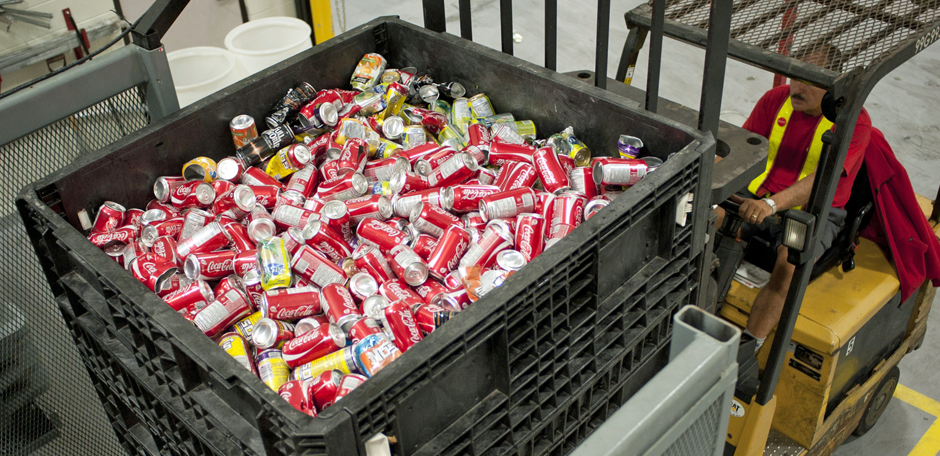In part one, Sarah shares the strategy behind packaging design and how the Company plans to move forward on its journey. Part two is available here.
Packaging is at the heart of World Without Waste and an essential part of most people’s experience with Coke’s beverage portfolio. What factors go into decisions around the types of packaging used?
Safety and quality are always our number one priorities when it comes to anything we do. We also need to consider how people enjoy our beverages when thinking through our packaging design. For example, do they need a beverage in a package that’s resealable if they are going to enjoy it on the go?
For many years we’ve also looked to determine the environmental impact of our packaging. Many people don’t know that we track the carbon footprint of our packaging through a lifecycle assessment (LCA). Not very many people know that Coca-Cola conducted what is widely recognized as the first LCA back in 1969. An LCA helps us evaluate a product and its packaging’s overall impact of the environment. This process helped us identify key benefits of plastic.
What makes plastic such a usefully packaging material?
What would you say to those that would like to see plastic packaging banned altogether?
I actually think we have more in common than many realize. We are also against plastic waste. We want all of our packaging to go into recycling and not end up in places that it doesn’t belong, like in the world’s oceans or landfills. That’s why we signed onto the G7 Ocean Plastics Charter this year.
As reusable bottles and packaging-free options become more popular, is Coca-Cola concerned about falling behind?
Not at all. While we stand by all our packaging options, we’re always exploring new ways to offer our beverages that require no packaging whatsoever.
We’re also piloting a new fountain platform called Dasani PureFill in the U.S. This innovation allows consumers to fill reusable water bottles for free or add carbonated water or flavours for a small fee depending on the size of the container. We’re still in the very early stages of this pilot but look forward to expanding its availability in the future.
As we approach the anniversary of Coca-Cola’s World Without Waste announcement, how is Coke progressing on this journey?
World Without Waste was an ambitious vision and James presented it specifically because it wasn’t easy and wouldn’t be solved overnight. Packaging waste is an important global issue that affects us all and if we want to take it seriously, we must be prepared to make it part of how we do business.
Having said that we already know that some things already do work. We aren’t new to sustainable packaging, in fact we’ve been working to improve recycling and packaging recyclability for decades. As we move forward we’re working to replicate and scale those existing methods, while also developing new solutions and funding ideas to help reduce waste further.
We cannot fix this packaging problem by ourselves, we need to work together with industry and non-profit partners to make this a reality.
PART TWO IS AVAILABLE HERE:
